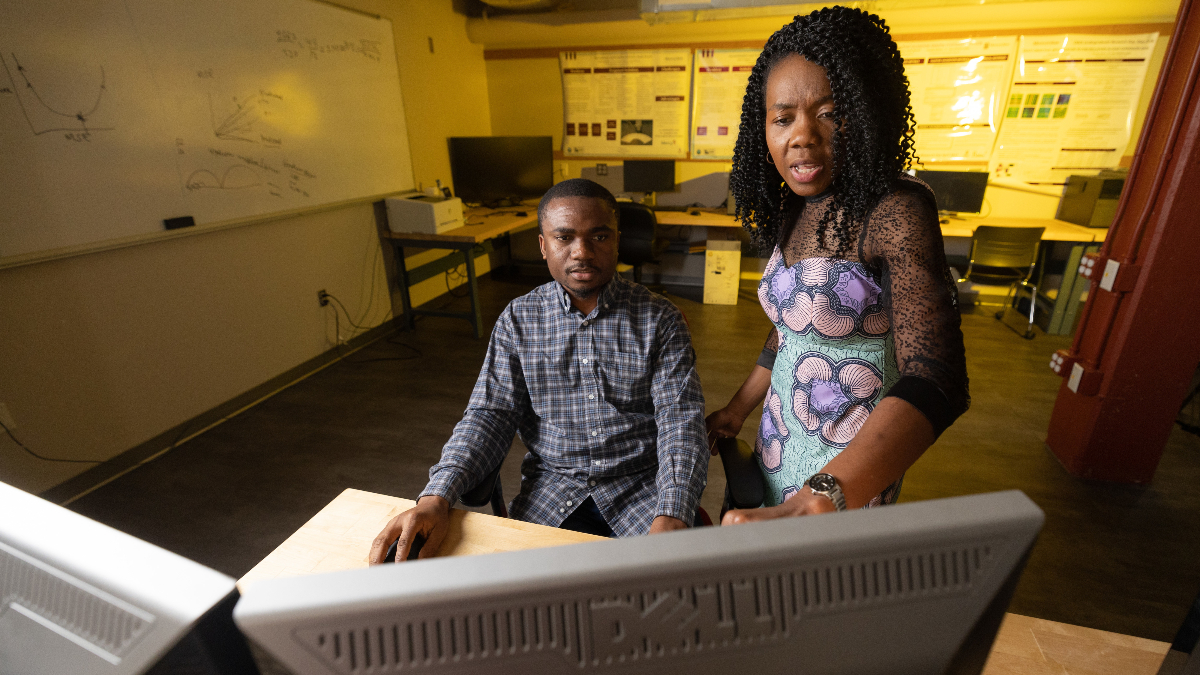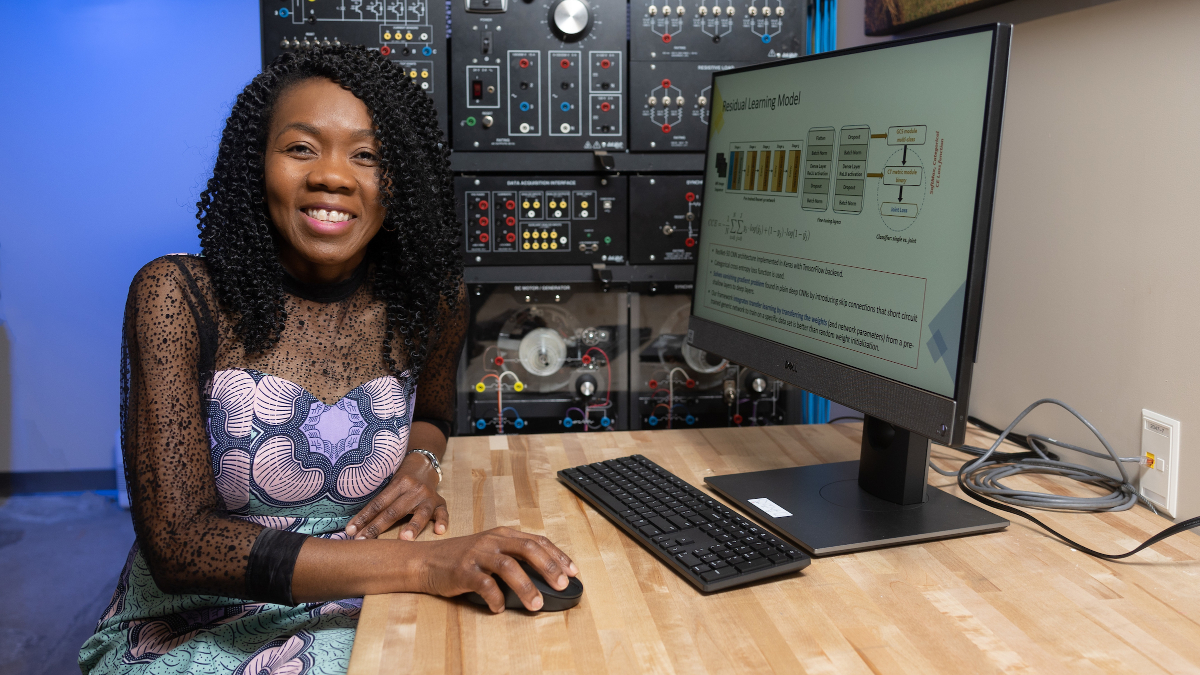Archive for February, 2023
Pattern recognition enhances biomedical research
Many mathematical processes depend upon this ability to sort information or attributes, and it’s a big part of machine learning, too, according to Dr. Tayo Obafemi-Ajayi.
“The great thing about machine learning is it allows us this discovery of knowledge but also prediction,” Obafemi-Ajayi said.
She is an associate professor of electrical engineering in Missouri State University’s cooperative engineering program with the University of Missouri Science and Technology.
Although her research covers a wide spectrum, it is all tied to the use of technology in biomedical sciences. She designs computational models and algorithms that make it possible for a machine to learn to sort data and predict outcomes — all in hopes of automating processes or improving decision making.
Team building
When evaluating new projects, Obafemi-Ajayi leans on her expertise in mathematics and computer and electrical engineering. She has published more than 10 peer-reviewed journal articles in these fields in the last five years.
“I’m always interested in the real-life problems we are facing,” she said. “I ask, ‘How does that translate to a machine learning problem? And how can machine learning make it better?’”

To improve machine learning, data must be available. Clinical data are usually collected for physicians. Unfortunately, these data may not be what are most useful for a computer, leaving knowledge gaps.
“All of this data we’re amassing, can we put it to use and learn something that will benefit our society?”
That’s one reason she builds domain experts into her research team from the very onset of each project. These experts – statisticians, neuroscientists, neurosurgeons, mathematicians and engineers – work together to design projects, create solutions, validate the process and interpret results. She calls this “no-boundary thinking.”
Dr. Gayla Olbricht, a frequent collaborator and mathematician at Missouri University of Science and Technology, greatly values this model.
“She is very successful at working with medical doctors to help inform useful research questions and to ensure that the results can be interpreted in a clinically meaningful way,” Olbricht said. “I appreciate her openness to learning about new concepts from different experts on the team to strengthen the overall research.”
Giving hope
For physicians, diagnosing and giving accurate prognoses are challenging due to the number of symptoms, demographics and other variables. In disorders like autism, the heterogeneous nature of these variables caused the medical community to classify it as a spectrum disorder.
“For the biomedical applications I work with, we’re not trying to replace the doctors. We’re helping to enhance.”
The nuances of autism drew Obafemi-Ajayi’s interest. From her perspective, a study of autism’s effects would be an ideal place to apply machine learning.
“We were looking for any meaningful patterns that could shed light on what we know,” she said.
Her research team wanted to break up the symptoms into more homogeneous clusters and patterns, so doctors and families could be more informed.
“Parents could have more hope. They could see, ‘These are the types of symptoms my child has, and this is how others in a similar state have developed.’”
And that’s what Obafemi-Ajayi’s team was able to do, resulting in multiple papers on the subject.
Seeing the signs
Similarly, traumatic brain injuries, or TBI, are quite heterogeneous, noted Obafemi-Ajayi.
Her research team discovered that in addition to symptoms and outcomes varying widely, there were even more data sets in TBI. This included clinical labs, imaging data, genetic and demographic information, and blood biomarkers.
While the study focused on TBI, they tackled it with the same goals and similar tactics in mind. They worked to identify subgroups of TBI sufferers, predict outcomes and test the validity and ability of the machine to apply its learning accurately.
For this, they used data from the Federal Interagency Traumatic Brain Injury Research, which the National Institutes of Health maintains. On the initial study, they successfully broke out seven subgroups, driven by the cause of injury and recovery trajectory.
“We’re trying to really see, ‘Can we design stuff and produce meaningful results that have a clinical significance and make sense?’”
Obafemi-Ajayi was surprised by some of the correlations that showed up, though, including how education, age and marital status related to outcome. This spurred on more study in this area.
“From the computational aspect, I didn’t believe these were meaningful data points that could help with prediction,” she said. “But it’s actually surfacing.”
In a related TBI study, her team analyzed blood-based biomarkers of college athletes suffering from concussion. The study revealed some connections, but it was made more challenging because many concussed athletes didn’t have blood drawn immediately after the injury.
“With the biomarkers, some of it turned out differently than what we thought it would show, but it’s helpful to know that. Going forward, there’s no need to spend money on this aspect,” she said.
Influencing where funding should go and advocating for innovative research is important to Obafemi-Ajayi.
“At the end of the day, what you’re trying to do is design a model that can learn to do things intelligently based on observing the patterns of how somebody who knows this has done it,” Obafemi-Ajayi said. “Hopefully, some of our work eventually trickles out of the lab to the bedside.”
Further reading
- Story by Nicki Donnelson
- Photos by Jesse Scheve
- Video by Office of Video Marketing


